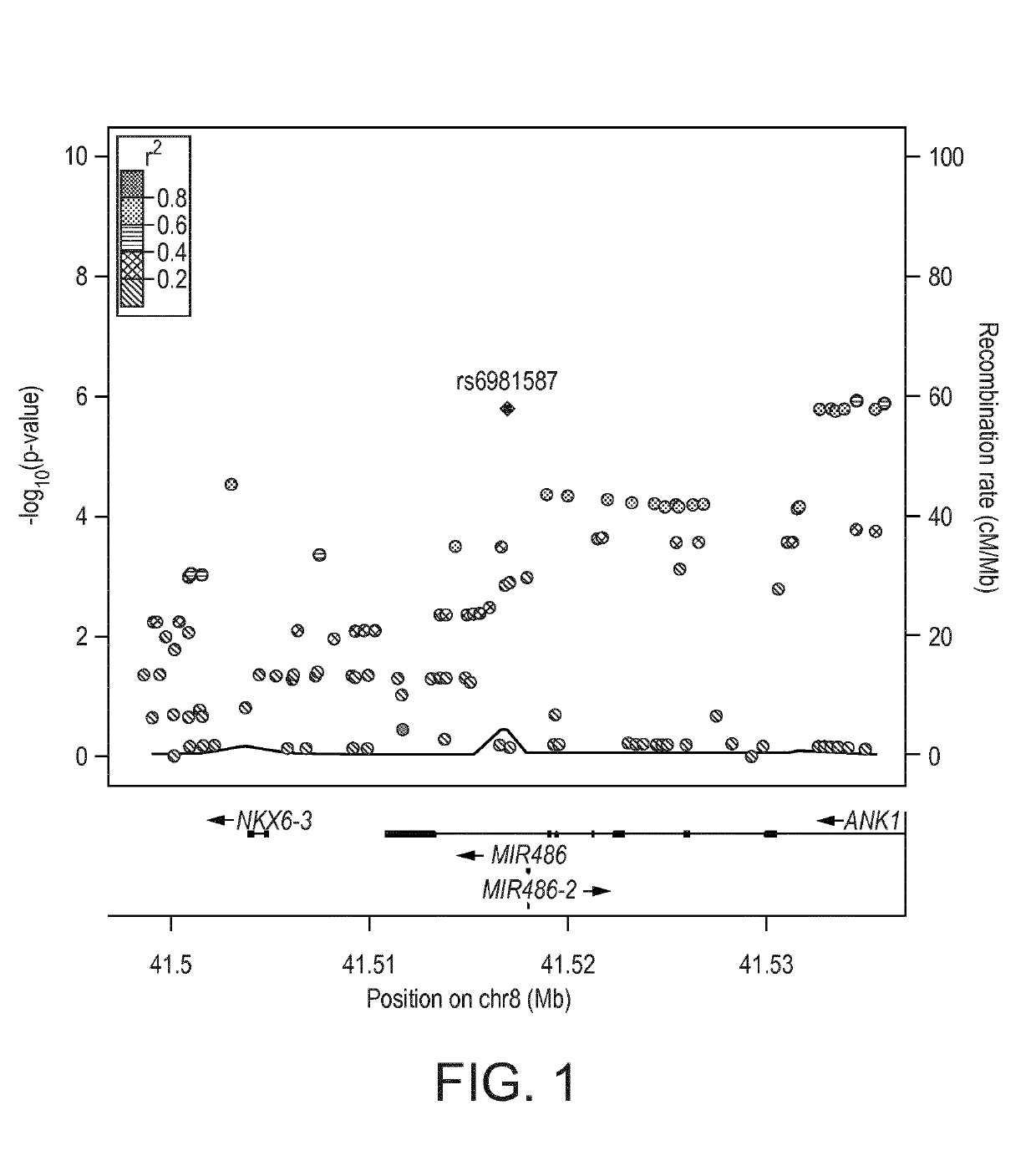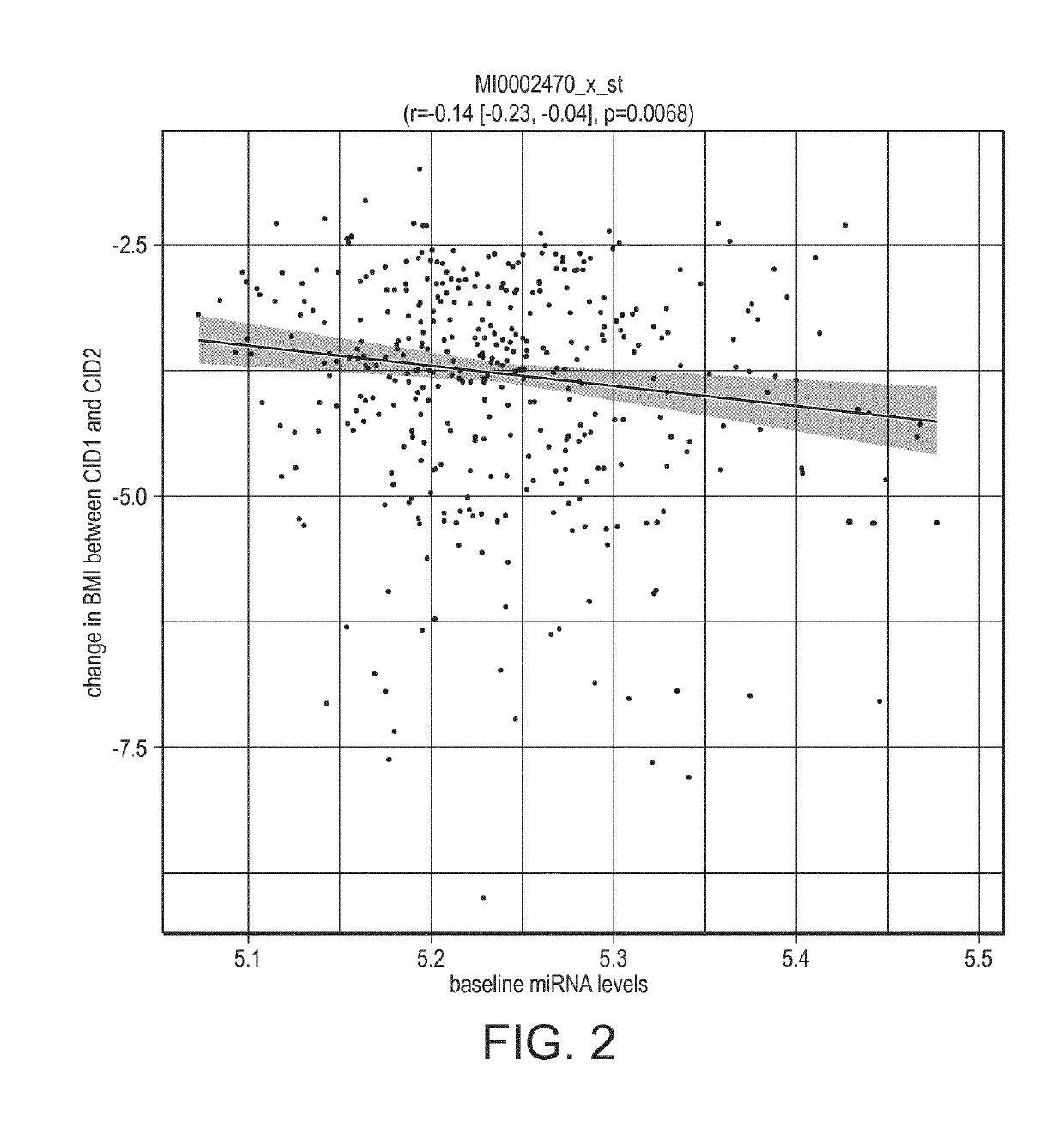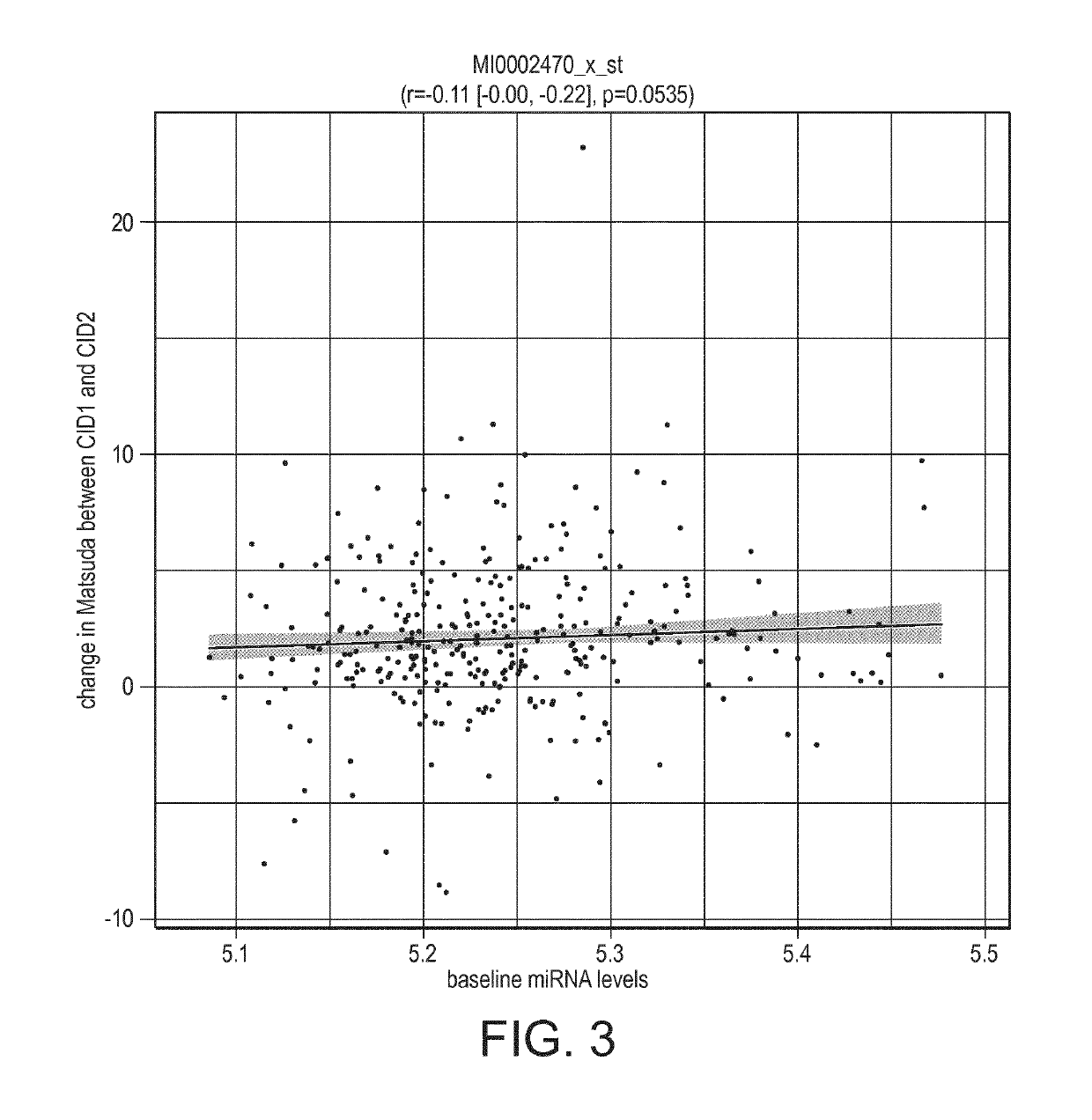Biomarkers for predicting degree of weight loss
a biomarker and weight loss technology, applied in the field of biomarkers and biomarker combinations, can solve the problems of unrealistic weight loss expectations, large variability in the weight loss capacity of subjects, dropout, etc., and achieve the effect of improving glycemic control
- Summary
- Abstract
- Description
- Claims
- Application Information
AI Technical Summary
Benefits of technology
Problems solved by technology
Method used
Image
Examples
example 1
NPs Predict Weight Loss
[0312]Following genome-wide association analyses of the Ottawa and Diogenes cohort (two-stage analyses, FDR set at 5%), the miR-486 locus emerged as a significant predictor of weight loss upon low-caloric diet (LCD). Results were significant both using a single-SNP and a gene-based approach. The gene-based results were as follows:[0313]Ottawa discovery cohort p=2.2e−5[0314]Diogenes validation cohort p=6.61e−4[0315]Meta-analysis of the two cohorts p=2e−6
[0316]Single-SNP results are illustrated in FIG. 1. Among 130 SNPs located nearby the miR-486 locus, 11 SNPs had p<0.0001.
[0317]Results for those 11 top SNPs are shown below in Table 1.
TABLE 1Asso-Effect ofShownciatedassociatedas SEQchrposSNP rsidalleleallelep.valueID NO:841534485rs545936Gimproved1.15E−063weight loss841535886rs56306962Cimproved1.25E−066weight loss841516915rs6981587Cimproved1.54E−064weight loss841533847rs518629Timproved1.57E−067weight loss841533201rs77072645Gimproved1.58E−068weight loss841532647r...
example 2
evels Predict Changes in Clinical Outcomes Upon LCD and Weight Maintenance
[0319]Using miR-486 levels, as quantified using miRNA Affymetrix arrays (see below section Quantification of miRNA levels), the association of baseline levels of miR-486 with clinical outcome during weight loss was determined.
[0320]Baseline miR-486 levels were significantly associated with weight- and glycemic-outcomes, both after LCD and after a weight maintenance phase.
Association pvalue forAssociation pvalue forchanges after weightClinical endpointchanges after LCDmaintenanceBMI (kg / m2)0.01910.1051Fat mass (kg)0.13170.0483Weight (kg)0.03010.1021Matsuda insulin0.03410.0212sensitivity indexInsulinogenic index0.12910.0895Insulin AUC0.47630.0376glucose AUC0.01270.0051
[0321]These results indicated that baseline miR-486 levels are indicators of the patients' capacity to respond to a weight loss and weight maintenance intervention.
[0322]Specifically, high levels of miR-486 are indicators of positive clinical outco...
example 3
s Predict miRNA Levels
[0323]Quantitative trait analyses (QTL) identified SNPs, nearby the miR-486 gene, which were associated with miR-486 expression levels (FIG. 6). The twenty-one top SNPs (with p<5%) are listed in the table below.
TABLE 2Asso-ShownciatedEffect ofp.as SEQchrposSNP rsidalleleassociated allelevalueID NO:841504413rs190249167Chigher mir-levels0.0235841505277rs55794933Ahigher mir-levels0.02315841509099rs72638941Chigher mir-levels0.02416841515015rs72638952Ghigher mir-levels0.02617841506082rs72638939Chigher mir-levels0.02718841506162rs72638940Ahigher mir-levels0.02819841509218rs117956059Chigher mir-levels0.02820841511410rs72638943Thigher mir-levels0.02821841513071rs72638944Ghigher mir-levels0.02822841513539rs72638945Chigher mir-levels0.02823841513796rs72638947Chigher mir-levels0.02824841514758rs72638950Ahigher mir-levels0.02825841532580rs78673930Ahigher mir-levels0.03326841532834rs139183594Thigher mir-levels0.03327841509180rs77385495Thigher mir-levels0.03428841509083rs117...
PUM
| Property | Measurement | Unit |
|---|---|---|
| total energy intake | aaaaa | aaaaa |
| time | aaaaa | aaaaa |
| time | aaaaa | aaaaa |
Abstract
Description
Claims
Application Information
 Login to View More
Login to View More - R&D
- Intellectual Property
- Life Sciences
- Materials
- Tech Scout
- Unparalleled Data Quality
- Higher Quality Content
- 60% Fewer Hallucinations
Browse by: Latest US Patents, China's latest patents, Technical Efficacy Thesaurus, Application Domain, Technology Topic, Popular Technical Reports.
© 2025 PatSnap. All rights reserved.Legal|Privacy policy|Modern Slavery Act Transparency Statement|Sitemap|About US| Contact US: help@patsnap.com



